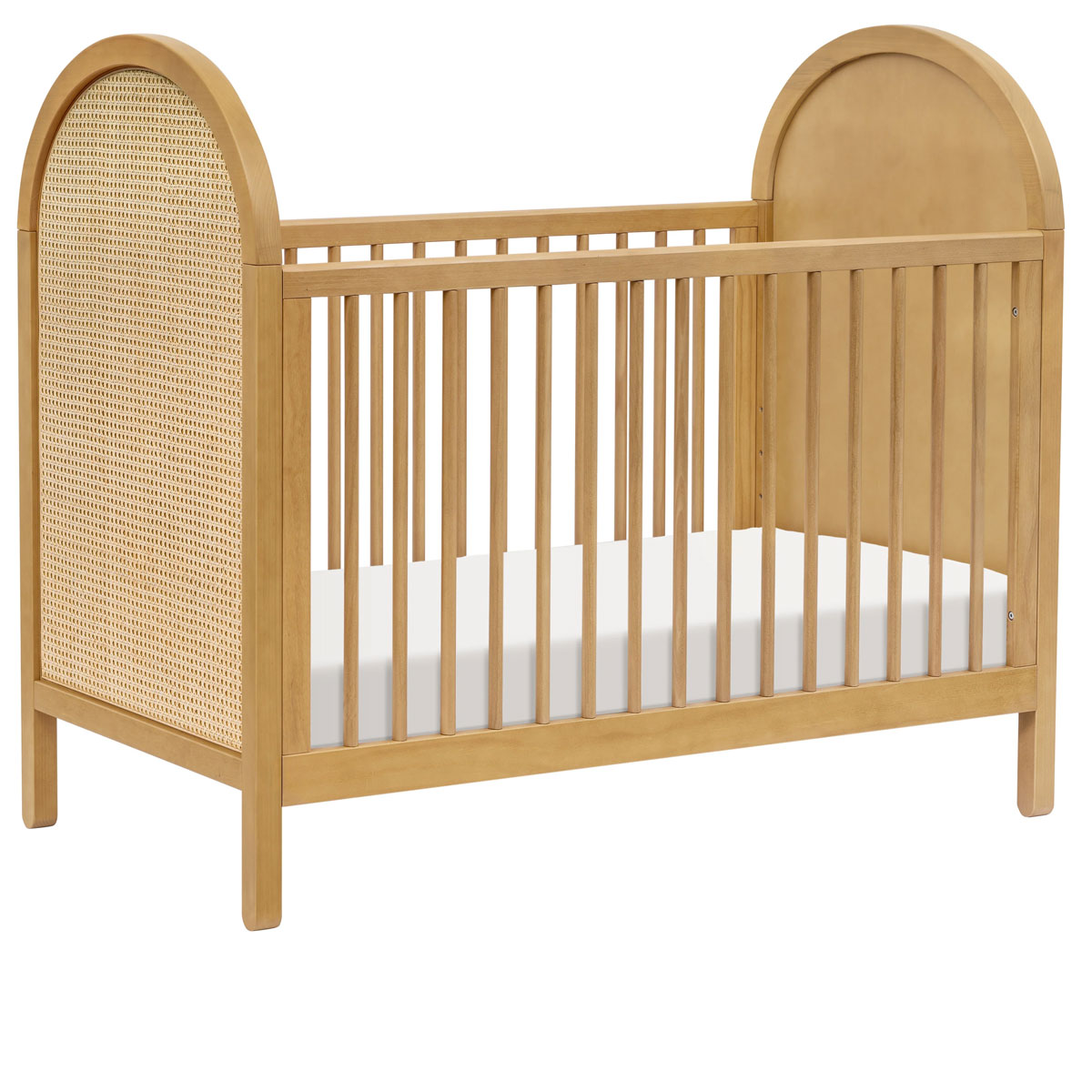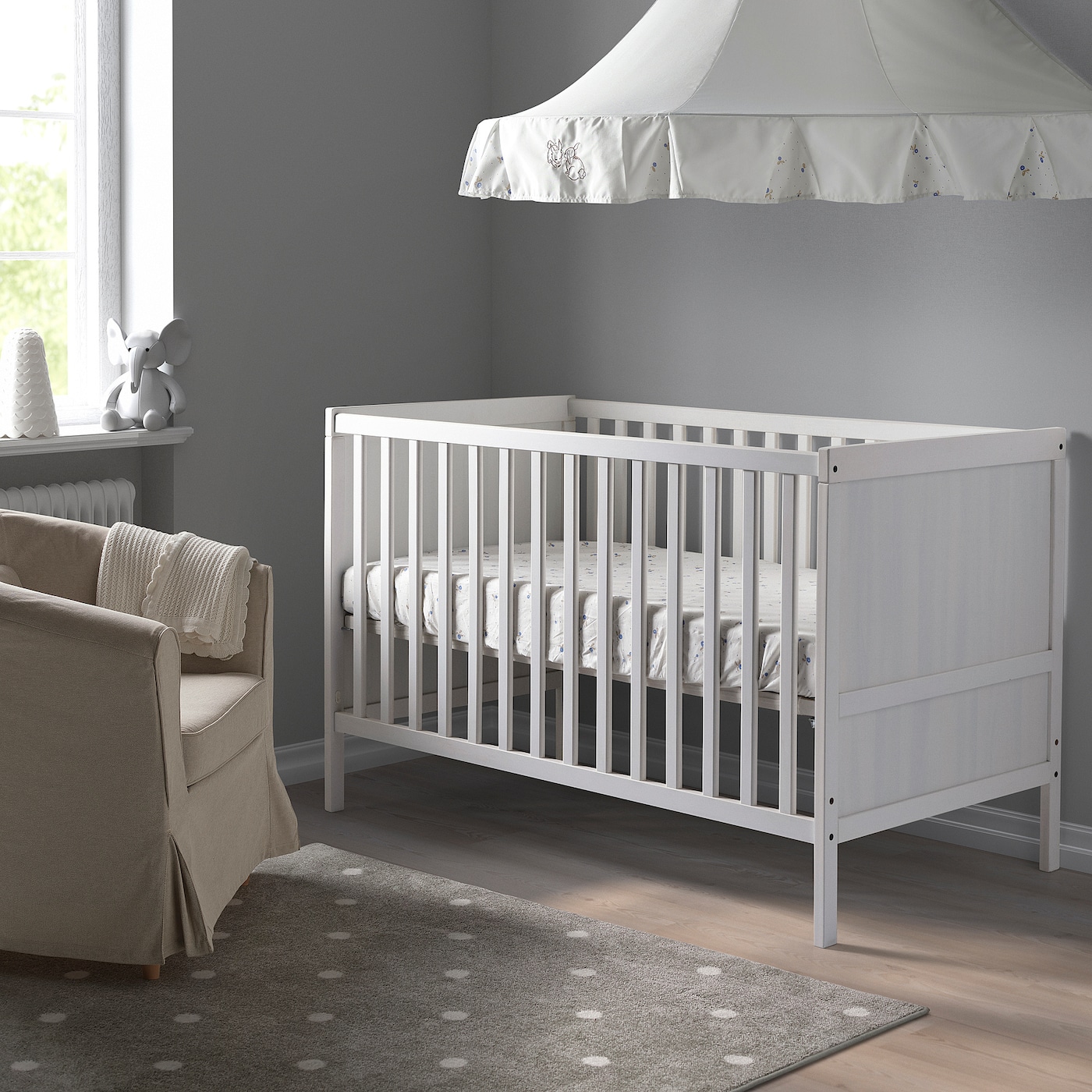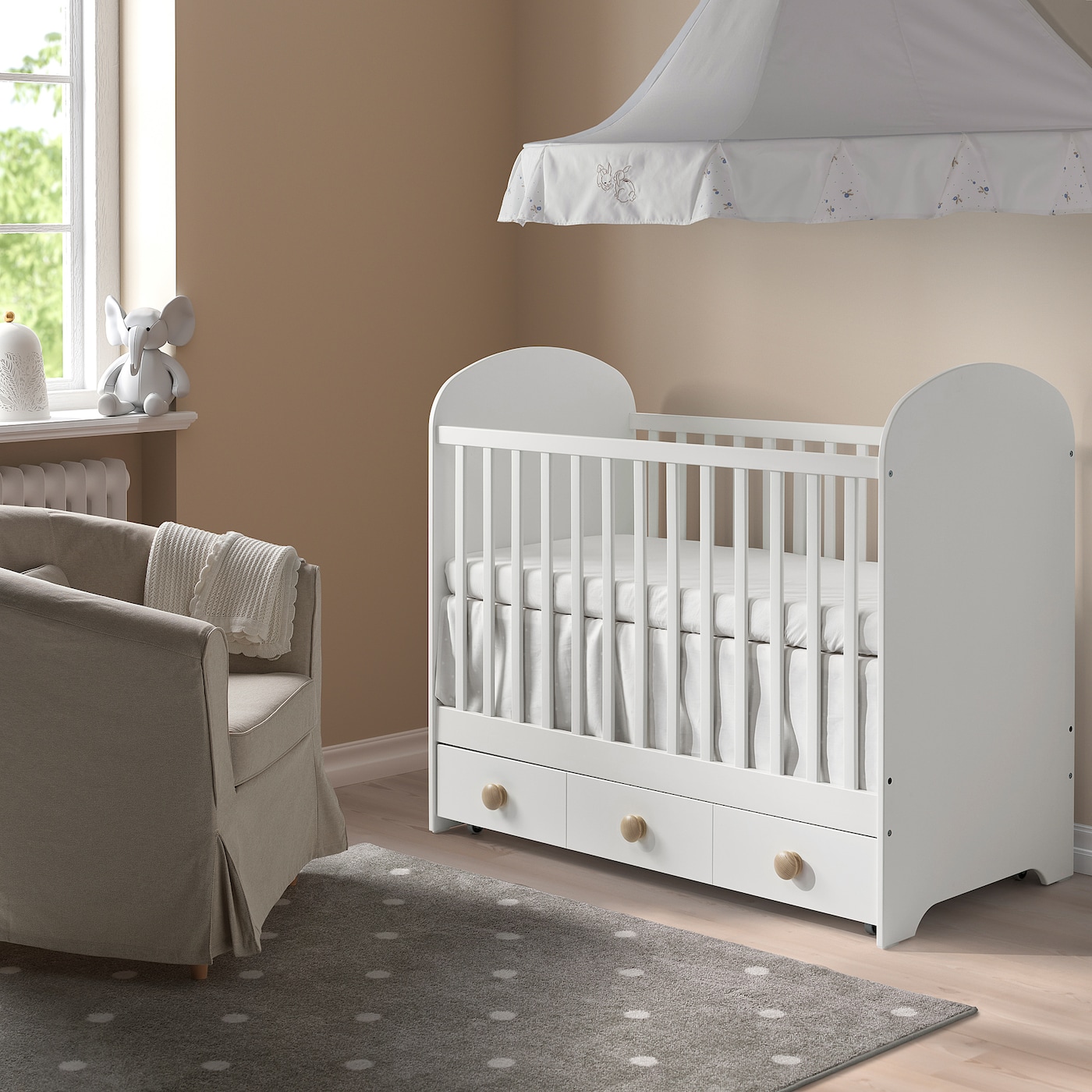Introduction: Understanding Your Options
When it comes to preparing for a new baby, one of the most important decisions parents face is choosing between a cradle and a crib for their little one’s sleeping space. Both options offer unique benefits and considerations, making the decision a significant one for new parents. In this guide, we’ll explore the differences between cradles and cribs, as well as factors to consider when making your decision. By weighing the pros and cons of each option, you can make an informed choice that meets your baby’s needs and fits your family’s lifestyle.

1. The Charm of Cradles: A Cozy Nest for Newborns
Cradles have been a traditional choice for newborns for centuries, offering a cozy and intimate sleeping space that mimics the feeling of being held in a caregiver’s arms. These small, rocking beds provide gentle motion that can soothe fussy babies and help them drift off to sleep. Additionally, cradles are often lightweight and portable, making them easy to move from room to room as needed. However, it’s essential to note that cradles have weight and age limitations, typically accommodating babies up to around six months old or until they can push up on their hands and knees.
2. The Versatility of Cribs: A Long-Term Investment
Cribs, on the other hand, are designed to provide a safe and secure sleeping environment for babies and young children for an extended period. Unlike cradles, cribs have no weight limit, allowing them to accommodate infants as they grow into toddlers and beyond. Many cribs also feature adjustable mattress heights, allowing you to lower the mattress as your baby becomes more mobile and to prevent them from climbing out as they grow older. Additionally, cribs come in a variety of styles and designs, from classic to modern, allowing you to choose one that complements your nursery decor and personal preferences.
3. Safety Considerations: Prioritizing Your Baby’s Well-Being
When choosing between a cradle and a crib, safety should be a top priority. Both options should meet current safety standards, including regulations for spacing between slats, mattress firmness, and overall stability. Additionally, parents should ensure that the sleeping surface is free of loose bedding, pillows, and stuffed animals to reduce the risk of suffocation or Sudden Infant Death Syndrome (SIDS). It’s also essential to follow manufacturer guidelines for assembly and use, including weight limits and recommended ages for each sleeping option.

4. Space and Portability: Tailoring Your Choice to Your Lifestyle
Another factor to consider when choosing between a cradle and a crib is the available space in your home and your lifestyle preferences. Cradles are often smaller and more compact than cribs, making them ideal for smaller nurseries or for families who plan to keep their baby in the same room for the first few months. Additionally, the portability of cradles makes them convenient for travel or for parents who want to keep their baby close by throughout the day and night. Cribs, on the other hand, require more space and are less portable but offer the benefit of long-term use and versatility as your baby grows.
5. Budget Considerations: Finding the Right Balance
Budget is another essential consideration when choosing between a cradle and a crib. While cradles are often more affordable upfront, they may only be suitable for use during the first few months of your baby’s life. In contrast, cribs represent a more significant investment but offer long-term use and versatility that can save money in the long run. Additionally, cribs can often be converted into toddler beds or even full-size beds with the purchase of conversion kits, further extending their lifespan and value. Ultimately, it’s essential to weigh the upfront cost against the long-term benefits and choose the option that best fits your budget and priorities.

6. Personal Preference: Reflecting Your Parenting Style
Beyond practical considerations, your personal parenting style and preferences may also influence your decision between a cradle and a crib. Some parents may feel drawn to the traditional charm and intimacy of a cradle, enjoying the close proximity and soothing rocking motion it provides. Others may prefer the versatility and long-term investment of a crib, appreciating its durability and adaptability as their baby grows.
Consider how each option aligns with your parenting philosophy and lifestyle. Are you someone who values traditional practices and the idea of keeping your baby close by in a cozy cradle? Or do you prefer the practicality and longevity of a crib that can transition with your child into toddlerhood and beyond? By considering your personal preferences, you can choose the sleeping option that feels right for you and your family.

7. Environmental Impact: Making Sustainable Choices
As concerns about environmental sustainability continue to grow, many parents are also considering the eco-friendliness of their baby gear choices. When choosing between a cradle and a crib, it’s worth considering the materials used in their construction, as well as their potential lifespan and impact on the environment.
Cradles are often made from natural materials such as wood, which can be more sustainable than cribs made from plastic or metal. Additionally, the smaller size of cradles means they may require fewer resources to manufacture and transport. However, cribs that are built to last and can be converted into other types of beds may ultimately have a lower environmental impact by reducing the need for additional furniture purchases in the future.
Consider your values and priorities regarding environmental sustainability when making your decision, and choose the option that aligns with your commitment to reducing your family’s ecological footprint.

Conclusion: Making an Informed Decision
Choosing between a cradle and a crib is a significant decision for new parents, with implications for your baby’s safety, comfort, and well-being. By considering factors such as safety, space, portability, and budget, you can make an informed choice that meets your family’s needs and preferences. Whether you opt for the cozy charm of a cradle or the long-term versatility of a crib, the most important thing is to create a safe and nurturing sleeping environment where your baby can rest and grow. With the right choice, you can provide your little one with a comfortable and secure place to sleep, setting the stage for healthy development and peaceful nights for the whole family.
